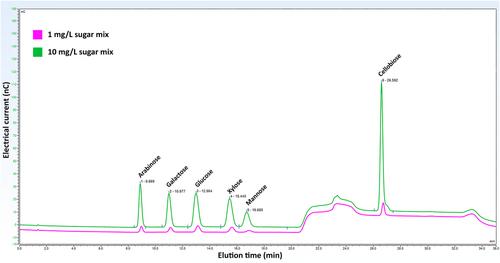Preparation and Compositional Analysis of Lignocellulosic Plant Biomass as a Precursor for Food Production During Food Crises
Tara N. Mather, Niroshan Siva, Marjorie Jauregui, Hannah Klatte, Joshua D. Lambert, Charles T. Anderson
{"title":"Preparation and Compositional Analysis of Lignocellulosic Plant Biomass as a Precursor for Food Production During Food Crises","authors":"Tara N. Mather, Niroshan Siva, Marjorie Jauregui, Hannah Klatte, Joshua D. Lambert, Charles T. Anderson","doi":"10.1002/cpz1.1090","DOIUrl":null,"url":null,"abstract":"<p>In the event of a sunlight-blocking, temperature-lowering global catastrophe, such as a global nuclear war, super-volcano eruption or large asteroid strike, normal agricultural practices would be severely disrupted with a devastating impact on the global food supply. Despite the improbability of such an occurrence, it is prudent to consider how to sustain the surviving population following a global catastrophe until normal weather and climate patterns resume. Additionally, the ongoing challenges posed by climate change, droughts, flooding, soil salinization, and famine highlight the importance of developing food systems with resilient inputs such as lignocellulosic biomass. With its high proportion of cellulose, the abundant lignocellulosic biomass found across the Earth's land surfaces could be a source of energy and nutrition, but it would first need to be converted into foods. To understand the potential of lignocellulosic biomass to provide energy and nutrition to humans in post-catastrophic and other food crisis scenarios, compositional analyses should be completed to gauge the amount of energy (soluble sugars) and other macronutrients (protein and lipids) that might be available and the level of difficulty in extracting them. Suitable preparation of the lignocellulosic biomass is critical to achieve consistent and comparable results from these analyses. Here we describe a compilation of protocols to prepare lignocellulosic biomass and analyze its composition to understand its potential as a precursor to produce post-catastrophic foods which are those that could be foraged, grown, or produced under the new climate conditions to supplement reduced availability of traditional foods. These foods have sometimes been referred to in the literature as emergency, alternate, or resilient foods. © 2024 The Authors. Current Protocols published by Wiley Periodicals LLC.</p><p><b>Basic Protocol 1</b>: Convection oven drying (1 to 2 days)</p><p><b>Alternate Protocol 1</b>: Air-drying (2 to 3 days)</p><p><b>Alternate Protocol 2</b>: Lyophilization (1 to 4 days)</p><p><b>Support Protocol 1</b>: Milling plant biomass</p><p><b>Support Protocol 2</b>: Measuring moisture content</p><p><b>Basic Protocol 2</b>: Cellulose determination</p><p><b>Basic Protocol 3</b>: Lignin determination</p><p><b>Basic Protocol 4</b>: Crude protein content by total nitrogen</p><p><b>Basic Protocol 5</b>: Crude fat determination via soxtec extraction system</p><p><b>Basic Protocol 6</b>: Sugars by HPLC</p><p><b>Basic Protocol 7</b>: Ash content</p>","PeriodicalId":93970,"journal":{"name":"Current protocols","volume":null,"pages":null},"PeriodicalIF":0.0000,"publicationDate":"2024-06-25","publicationTypes":"Journal Article","fieldsOfStudy":null,"isOpenAccess":false,"openAccessPdf":"https://onlinelibrary.wiley.com/doi/epdf/10.1002/cpz1.1090","citationCount":"0","resultStr":null,"platform":"Semanticscholar","paperid":null,"PeriodicalName":"Current protocols","FirstCategoryId":"1085","ListUrlMain":"https://onlinelibrary.wiley.com/doi/10.1002/cpz1.1090","RegionNum":0,"RegionCategory":null,"ArticlePicture":[],"TitleCN":null,"AbstractTextCN":null,"PMCID":null,"EPubDate":"","PubModel":"","JCR":"","JCRName":"","Score":null,"Total":0}
引用次数: 0
Abstract
In the event of a sunlight-blocking, temperature-lowering global catastrophe, such as a global nuclear war, super-volcano eruption or large asteroid strike, normal agricultural practices would be severely disrupted with a devastating impact on the global food supply. Despite the improbability of such an occurrence, it is prudent to consider how to sustain the surviving population following a global catastrophe until normal weather and climate patterns resume. Additionally, the ongoing challenges posed by climate change, droughts, flooding, soil salinization, and famine highlight the importance of developing food systems with resilient inputs such as lignocellulosic biomass. With its high proportion of cellulose, the abundant lignocellulosic biomass found across the Earth's land surfaces could be a source of energy and nutrition, but it would first need to be converted into foods. To understand the potential of lignocellulosic biomass to provide energy and nutrition to humans in post-catastrophic and other food crisis scenarios, compositional analyses should be completed to gauge the amount of energy (soluble sugars) and other macronutrients (protein and lipids) that might be available and the level of difficulty in extracting them. Suitable preparation of the lignocellulosic biomass is critical to achieve consistent and comparable results from these analyses. Here we describe a compilation of protocols to prepare lignocellulosic biomass and analyze its composition to understand its potential as a precursor to produce post-catastrophic foods which are those that could be foraged, grown, or produced under the new climate conditions to supplement reduced availability of traditional foods. These foods have sometimes been referred to in the literature as emergency, alternate, or resilient foods. © 2024 The Authors. Current Protocols published by Wiley Periodicals LLC.
Basic Protocol 1: Convection oven drying (1 to 2 days)
Alternate Protocol 1: Air-drying (2 to 3 days)
Alternate Protocol 2: Lyophilization (1 to 4 days)
Support Protocol 1: Milling plant biomass
Support Protocol 2: Measuring moisture content
Basic Protocol 2: Cellulose determination
Basic Protocol 3: Lignin determination
Basic Protocol 4: Crude protein content by total nitrogen
Basic Protocol 5: Crude fat determination via soxtec extraction system
Basic Protocol 6: Sugars by HPLC
Basic Protocol 7: Ash content

木质纤维素植物生物质的制备和成分分析,作为粮食危机期间粮食生产的前体。
如果发生阻挡阳光、降低气温的全球性灾难,如全球核战争、超级火山爆发或大型小行星撞击,正常的农业生产将受到严重破坏,对全球粮食供应造成毁灭性影响。尽管这种情况不太可能发生,但还是应该谨慎考虑如何在全球灾难发生后维持幸存人口的生存,直到恢复正常的天气和气候模式。此外,气候变化、干旱、洪水、土壤盐碱化和饥荒带来的持续挑战也凸显了利用木质纤维素生物质等弹性投入开发粮食系统的重要性。地球表面丰富的木质纤维素生物质含有大量纤维素,可以成为能源和营养的来源,但首先需要将其转化为食物。为了解木质纤维素生物质在灾难后和其他粮食危机情况下为人类提供能量和营养的潜力,应完成成分分析,以衡量可能获得的能量(可溶性糖)和其他宏量营养素(蛋白质和脂质)的数量以及提取它们的难度。木质纤维素生物质的适当制备对于获得一致且可比较的分析结果至关重要。在这里,我们介绍了一套制备木质纤维素生物质并分析其成分的方案汇编,以了解其作为生产灾后食品的前体的潜力,灾后食品是指在新的气候条件下可以觅食、种植或生产的食品,以补充传统食品供应的减少。这些食品有时在文献中被称为应急食品、备用食品或复原食品。© 2024 作者。当前协议》由 Wiley Periodicals LLC 出版。基本规程 1:对流烘箱干燥(1 至 2 天) 替代规程 1:空气干燥(2 至 3 天) 替代规程 2:冻干(1 至 4 天) 支持规程 1:研磨植物生物质 支持规程 2:测量水分含量 基本规程 2:纤维素测定 基本规程 3:木质素测定 基本规程 4:通过总氮测定粗蛋白含量 基本规程 5:通过 soxtec 提取系统测定粗脂肪 基本规程 6:通过 HPLC 测定糖分 基本规程 7:灰分含量。
本文章由计算机程序翻译,如有差异,请以英文原文为准。


 求助内容:
求助内容: 应助结果提醒方式:
应助结果提醒方式:


